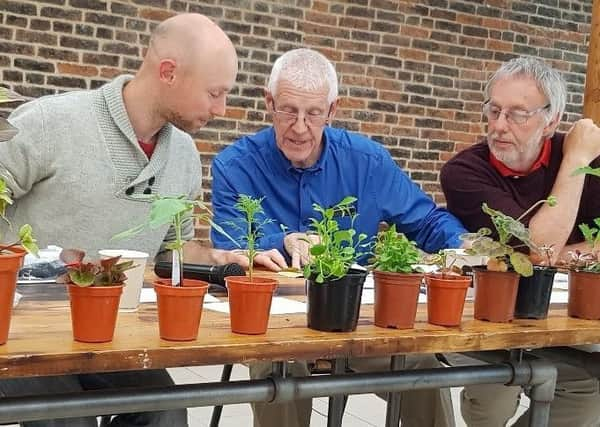Plenty of advice, but local tips may be best


Often it’s an acquaintance who wishes to share news of a success, for example, their first potato shoots have emerged, or to inform you of a bargain buy.
Eventually, the first problem of the season emerges and it’s important to resolve it asap. Help is required, but where can it be found?
Advertisement
Hide AdAdvertisement
Hide AdBooks that cover different aspects of horticulture are a useful standby, and they don’t have to cost the earth.
The D.G. Hessayon series of ‘Expert’ softbacks are packed with information, and each one is devoted to a key subject. Fruit, vegetables, trees and shrubs, pests and weeds are part of a wide range, so useful for the basics.
Heavier tomes offer an essential back-up for the more serious gardener, and the RHS encyclopedia A To Z Of Garden Plants is a must.
However, with new plant cultivars introduced almost daily, and existing plant names constantly revised, any such book is technically out of date at publication. True enthusiasts can access a journal that updates on nomenclature changes.
Advertisement
Hide AdAdvertisement
Hide AdThe companion RHS Encyclopedia Of Gardening, which reveals the practical aspects, such as planning, maintenance,cultivation, propagation and techniques, can be so helpful, and for an in-depth understanding of pests and diseases it also prints a book of that title.
Internet research, requests for advice and gardening forums can also be of help.
The RHS runs a service for members with gardening problems, but the most accessible source of all is an experienced local gardener who may have had the problem you are trying to resolve. You can exchange dialogue, produce a sample and work towards a conclusion.
A typical example of this occurred when a friend voiced concern over a mature ‘Peasgood Nonsuch’ apple tree, which although still offering heavy crops, was being undermined by a fungal disease.
Advertisement
Hide AdAdvertisement
Hide AdHe’d brought a sample of the suspected culprit; the tangle of black fungal strands (rhizomorphs) and a strong mushroom-like odour was enough to confirm it as the old adversary, honey fungus.
The fruits that give this disease its name generally appear at the base of affected specimens in late summer to autumn, but the invasive rhizomorphs are capable of spreading up to 1m per year below ground.
Control amounts to digging out the infected plant, roots, stumps and all.
Certain trees and shrubs have a reputation for resistance to the disease, for example, yew, beech, oak, choisya, actinidia and chaenomeles.